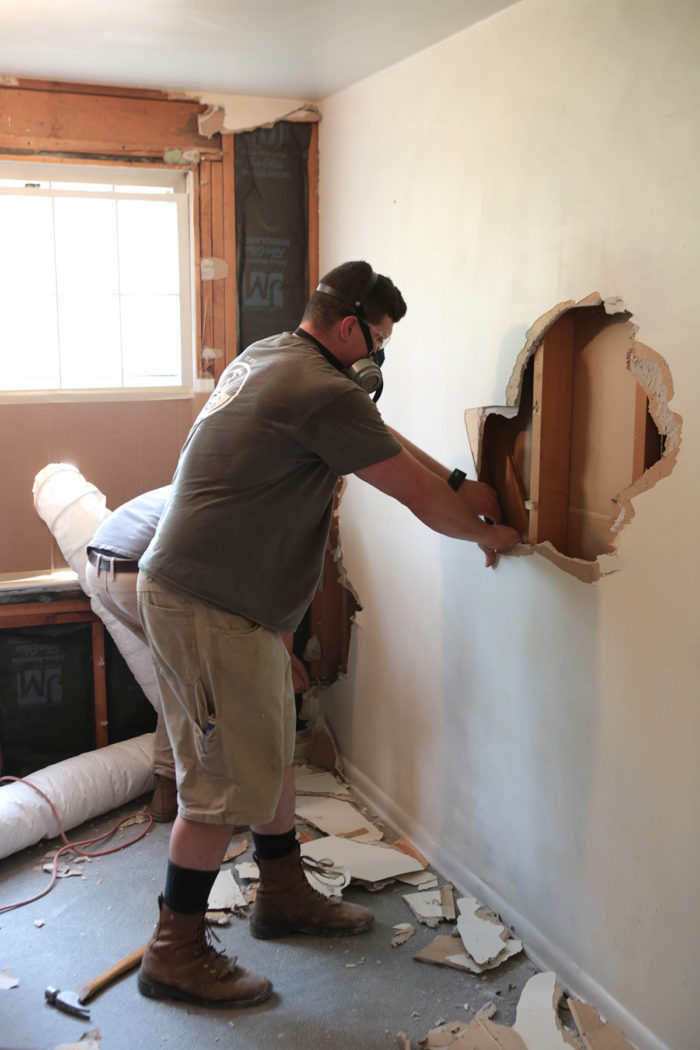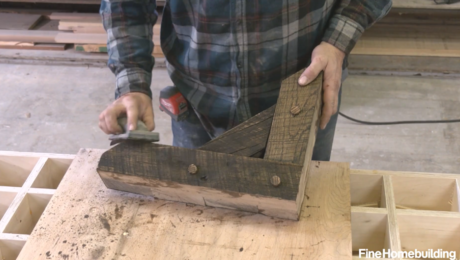Drywall Removal Made Easy
The goal is to remove the wall in big pieces, not smash it to bits.
If there’s one thing DIY TV shows are good at, it’s showing you the wrong way to take down drywall for a remodeling project. Sure, taking a sledgehammer to a wall can bring a moment of joy, but it’s a bit like putting a speedboat in the neighbor’s pool—there’s not a lot of space to swing it around, and it’s going to make a mess. Instead, do what New Jersey remodeler Tyler Grace did in FHB #271: Leave the sledgehammer in the shop, and pick up your framing hammer.

Using the framing hammer, bash a small hole between the studs or ceiling joists, and pull the drywall off by hand. Not only will you get bigger pieces and less mess, but the job will actually go faster. Once you have some space to get your arms behind the drywall, you can use the broad side of your hammer to help get it off the studs or ceiling joists in bigger pieces. Tapping the drywall with the side of your hammer close to framing members can help break it free of fasteners without busting it to bits.

If the ceiling above is insulated, consider removing or relocating the insulation before demolishing the drywall. Fiberglass batts will often stay in place if they’re stapled properly. But if it’s cellulose up there, you’ll be calf-deep in the stuff in no time, and it’ll stick to everything. Use a big dustpan or snow shovel to scoop it out of the joist bays.
Check out the full article, “DIY Kitchen Demolition,” in issue #271. Plus, read more of Tyler Grace’s demolition tips here:
Photos by Brian McAward.


























View Comments
“[Deleted]”
I agree that drywall demolition is wrongly portrayed on tv where actors show us the wrong way to do it which only creates more work and mess.
Based on a tip from years ago, I ground the end off of a jigsaw blade and then sharpened the tip like a chisel, so it only extends 1/2" past the foot surface. Now I can run the saw across 1/2" drywall and leave a dashed line that works like a zipper. It's also handy for making neat holes prior to repairs- it's easy to follow a pencil line with the blade.
On some of my jobs I pay my insulation company to suck out the blown in insulation